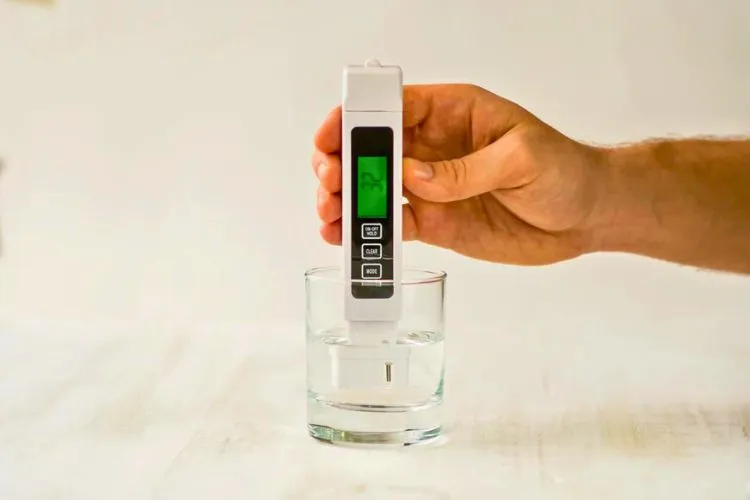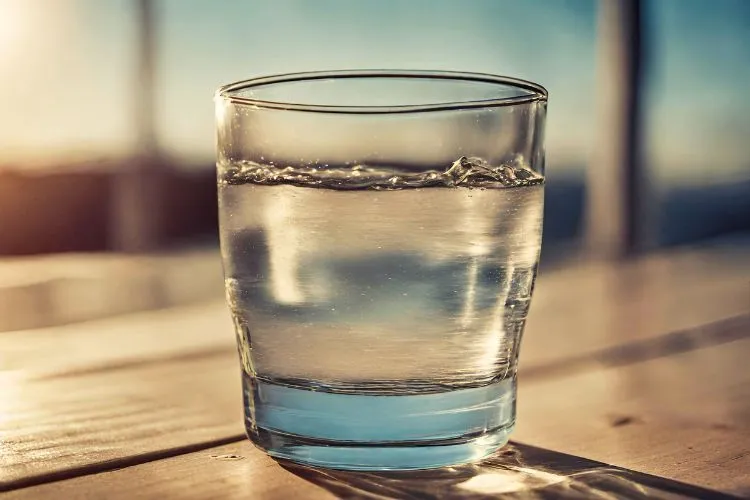Total Dissolved Solids (TDS) refers to the concentration of dissolved substances, such as minerals, salts, and metals, in water.
It plays a crucial role in determining water quality and has implications for health, taste, and the performance of appliances.
Water softeners, on the other hand, are commonly used to combat hard water issues caused by high levels of calcium and magnesium ions.
But, does water softener reduce TDS as well?
In this article, we will delve into the truth behind the impact of water softeners on TDS levels, separating fact from fiction.

💦 Does water softener reduce TDS?
No, water softeners do not reduce TDS (Total Dissolved Solids) levels. While they can effectively remove minerals that cause water hardness, they do not specifically target the broader range of dissolved substances included in TDS measurements.
TDS levels can vary based on factors such as regional water sources and treatment processes. If TDS reduction is a concern, alternative methods like reverse osmosis systems can be used.
Understanding TDS
Before diving into the effectiveness of water softeners in reducing TDS, it is important to grasp what TDS means and how it affects water quality.
TDS refers to any inorganic or organic substances that are dissolved in water, typically measured in parts per million (ppm).
These substances can include minerals, salts, metals, and even some organic compounds. While certain minerals are essential for the body, excessive TDS levels can have adverse effects on taste, health, and the lifespan of appliances.
Common sources of TDS in water can include dissolved minerals from soil and rocks, runoff from agricultural practices, industrial activities, and even municipal water treatment processes.
It is important to note that TDS levels can vary depending on geographical location and regional water sources.
How Water Softeners Work?
To understand the impact of water softeners on TDS, it’s important to acknowledge the mechanisms behind their functioning. Water softeners primarily combat water hardness, which is caused by high levels of calcium and magnesium ions in water.
Water softeners typically employ a process called ion exchange. The resin inside the water softener tank is coated with sodium ions.
As hard water flows through the tank, the calcium and magnesium ions present in the water adhere to the resin beads, while sodium ions are released.
This process effectively removes the minerals that cause hardness and replaces them with sodium ions, resulting in softened water.
Differentiating TDS and Hardness
One common misconception is that water softeners reduce TDS levels. However, it is essential to differentiate between TDS and water hardness.
Water hardness specifically refers to the presence of calcium and magnesium ions, while TDS encompasses a broader range of dissolved substances.
Water softeners are effective in reducing water hardness, but they do not directly reduce TDS levels.
While minerals that contribute to water hardness may be removed by water softeners, other dissolved substances, such as salts and metals, will remain in the water. Therefore, TDS levels may remain relatively unaffected by the use of water softeners.
💦 Factors Affecting TDS Levels
TDS levels in water can be influenced by various factors. Geological factors, such as the composition of rocks and soil in a particular region, can significantly contribute to TDS levels.
For example, water sourced from areas with high mineral content in the soil may have naturally elevated TDS levels. Additionally, the water treatment process employed by local municipalities can also impact TDS levels.
Certain treatment methods, such as chlorination, can add to the total dissolved solids in the water.

The Effect of Water Softeners on TDS
Numerous studies and research have been conducted to examine the effect of water softeners on TDS levels.
The consensus among experts is that water softeners do not have a significant impact on TDS reduction.
While water softeners are designed to remove minerals that cause water hardness, they are not specifically designed to target the broader range of dissolved substances included in TDS measurements.
Therefore, it is crucial to approach water softeners with the correct expectations. While they provide a solution for water hardness, other methods may be required to address elevated TDS levels if they are a concern.
TDS and Health Considerations
The health implications of elevated TDS levels in drinking water have been a topic of debate. It is important to note that TDS levels alone do not solely determine water safety.
The World Health Organization (WHO) suggests that drinking water with TDS levels below 300 ppm is generally considered acceptable for human consumption.
However, it is essential to consider local water quality standards and the specific nature of the dissolved substances present in the water.
Water with high TDS levels may often have a slightly different taste. While taste preferences can vary, it is important to note that elevated TDS levels do not necessarily indicate an immediate health risk.
💦 Alternative Solutions for TDS Reduction
While water softeners may not be effective in directly reducing TDS levels, alternative methods can be employed for TDS reduction.

One popular method is the use of reverse osmosis (RO) systems. Reverse osmosis is a water purification process that involves removing a wide range of dissolved substances, including minerals, salts, and metals, from the water by forcing it through a semipermeable membrane.
RO systems are highly effective in reducing TDS levels and can provide a more comprehensive solution if TDS reduction is a primary concern.
These systems separate the water into two streams: one that is clean and low in TDS and another containing the concentrated dissolved substances.
💦 Frequently Asked Questions (FAQs)
How can I test the TDS levels in my water?
You can use a TDS meter, which measures the conductivity of water to estimate TDS levels. These meters are widely available and easy to use.
Can a water softener completely eliminate TDS?
No, water softeners primarily focus on reducing water hardness caused by calcium and magnesium ions. They do not significantly impact TDS levels.
Are there any health risks associated with high TDS?
While some minerals found in high TDS water can be beneficial, excessive levels of certain substances can have health implications. It is important to reference local water quality standards and consult experts if there are concerns.
Addressing Common Myths and Considerations
Before concluding our discussion on how water softeners affect TDS levels, it’s important to address some common myths and additional considerations that might influence your understanding and decisions about water treatment systems.
Myth 1: “A water softener purifies water.”
While water softeners adjust the ionic concentration, specifically replacing calcium and magnesium with sodium ions, they do not purify water in the traditional sense.
They do not remove contaminants such as bacteria, viruses, pesticides, or organic pollutants. For comprehensive water purification, systems like UV filters or advanced carbon filters are required in addition to or instead of a water softener.
Myth 2: “Lower TDS means healthier water.”
TDS levels are not direct indicators of water’s health benefits. Lower TDS does not necessarily mean the water is healthier, as some dissolved minerals in water are beneficial to health.
Conversely, water with a high TDS might also be safe if the dissolved solids consist of essential minerals. The key is the specific composition of TDS rather than its concentration alone.
Additional Consideration: Environmental Impact
The use of water softeners has environmental implications as well. The backwash (regeneration) water from softeners, which is high in salt content, can pose challenges for wastewater treatment facilities and may negatively affect aquatic ecosystems due to its high salinity.
It’s crucial for users and communities to consider possible sustainable practices or technologies that minimize this impact.
Alternative Technologies
While reverse osmosis systems are effective in reducing TDS, other technologies such as deionization (DI) can also be used where absolutely pure water is needed, such as in laboratories or pharmaceutical processes.
DI systems remove nearly all ionized minerals and salts from water, providing very high purity water but at a higher operational cost.
These considerations ensure a comprehensive understanding of what water softeners can and can’t do and guide potential buyers to make informed decisions based on both effectiveness and sustainability.
Conclusion
In summary, water softeners are effective in reducing water hardness by removing calcium and magnesium ions. However, they do not directly reduce TDS levels.
TDS encompasses a wider range of dissolved substances, including minerals, salts, and metals, which are not specifically targeted by water softeners.
It is crucial to understand the distinction between water hardness and TDS and to have the correct expectations when using water softeners.
If TDS reduction is a primary concern, alternative methods such as reverse osmosis systems can be employed. Always consider local water quality standards and consult experts to ensure the highest water quality for your needs.

Devon Shorts, a seasoned expert with over a decade of experience in water safety, shares valuable insights on this blog “Aqua Safety Plus”. Trust his expertise to keep your water clean and your family safe.
